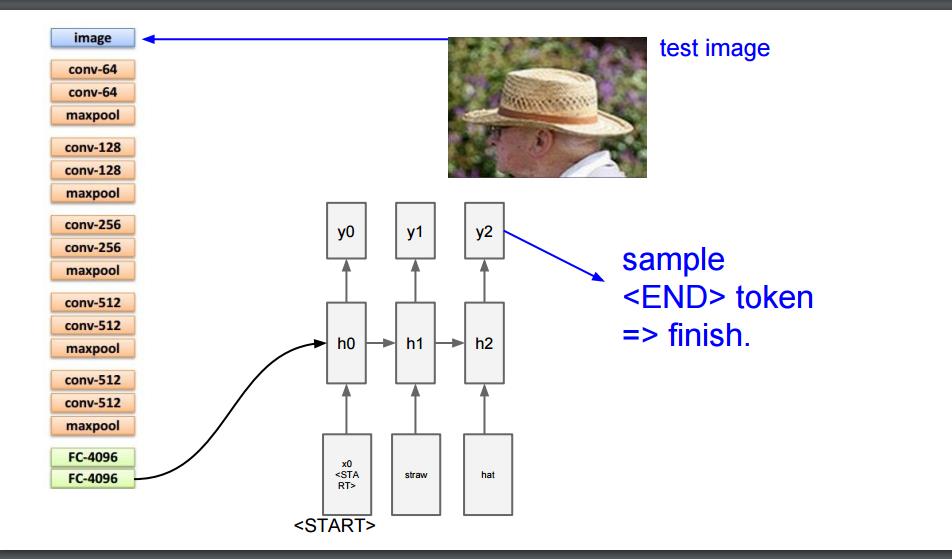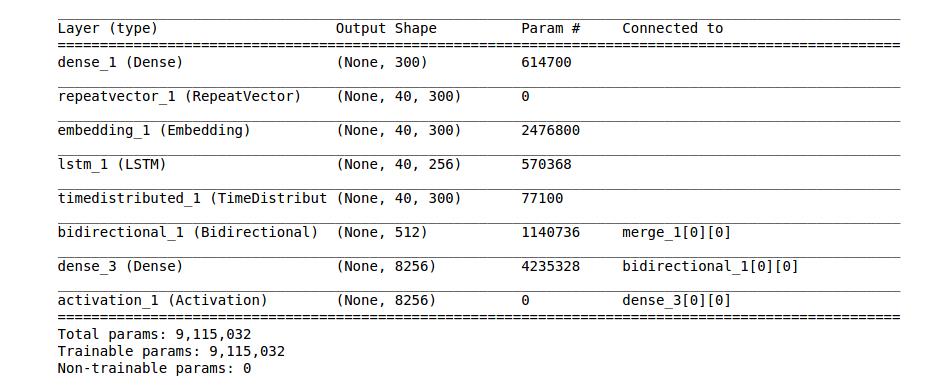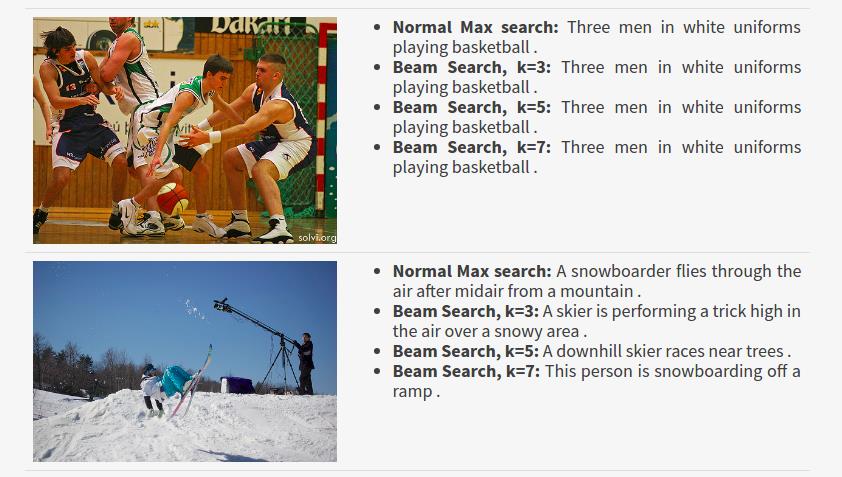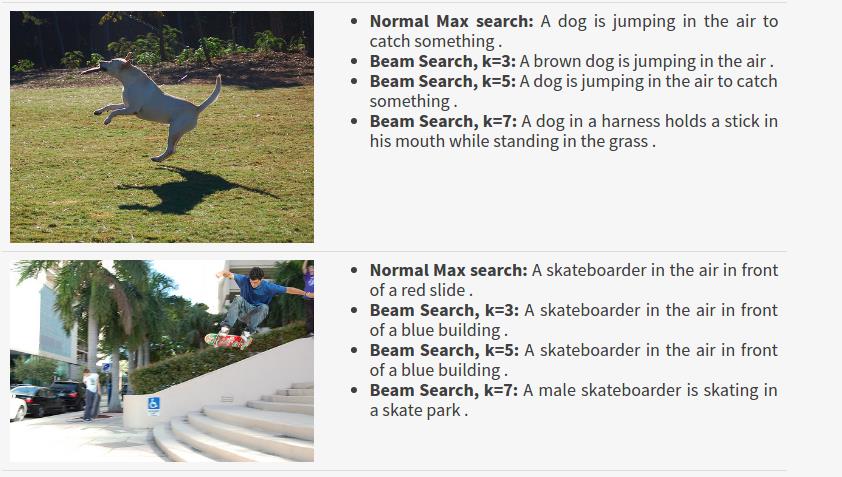Image Captioning using InceptionV3 and Beam Search
Image Captioning is the technique in which automatic descriptions are generated for an image. In this blog post, I will tell you about the choices that I made regarding which pretrained network to use and how batch size as an hyperparameter can affect your training process.
If you directly want to jump to the code, you can find it here. The entire code is in the jupyter notebook, so that should hopefully make it easier to understand. I will follow a code first approach and will explain some parts of the code in this post.
Dataset
I have used Flickr8k dataset(size 1 GB). MS-COCO and Flickr30K are other datasets that you can use. Flickr8K has 6000 training images, 1000 validation images and 1000 testing images. Each image has 5 captions describing it.
I have written the code for MS-COCO but haven’t run the model because I am a student right now and it is expensive for me to run a model for weeks. So if you have the resources, you can run the model. The code for the MS-COCO dataset is not clean but you can find the relevant parts and run it. Download the dataset and the captions here. The notebook for MS-COCO lives here.
Image feature extraction

This image is taken from the slides of CS231n Winter 2016 Lesson 10 Recurrent Neural Networks, Image Captioning and LSTM taught by Andrej Karpathy.
In Image Captioning, a CNN is used to extract the features from an image which is then along with the captions is fed into an RNN. To extract the features, we use a model trained on Imagenet. I tried out VGG-16, Resnet-50 and InceptionV3. Vgg16 has almost 134 million parameters and its top-5 error on Imagenet is 7.3%. InceptionV3 has 21 million parameters and its top-5 error on Imagenet is 3.46%. Human top-5 error on Imagenet is 5.1%.
-
I used VGG-16 as my first model for extracting the features. I took an hour to extract features from 6000 training images. This is very slow. Imagine how much time it will take to extract features in the MS-COCO dataset which has 80,000 training images.
-
Resnet-50 was the second model I tried for extracting features. But I didn’t train the model for long time because InceptionV3 has a better accuracy than Resnet-50 and almost the same number of parameters.
-
Finally, it was the time of InceptionV3. Since it has very less parameters as compared to VGG-16, it took 20 mins for InceptionV3 to extract features from 6000 images. I also ran this on MS-COCO dataset which contains 80,000 training examples and it took 2 hours and 45 minutes to extract the features.
Training and Hyperparameters
For creating the model, the captions has to be put in an embedding. I wanted to try Word2Vec to get the pre-trained embedding weights of my vocabulary, but it didn’t pan out. So, I took some ideas from it by setting the embedding size to 300. The image below is the model that I used.

-
The optimizer used was RMSprop and the batch size was set to 128.
-
I trained the model using the VGG-16 extracted features for about 50 epochs and got a loss value of 2.77.
-
After training the model using the InceptionV3 extracted features for about 35 epochs and got a loss value of 2.8876.
-
I trained this model for another 15 epochs and the loss value was not going below 2.88.
-
I tried learning rate annealing, changing the optimizer, changing the model architecture, the embedding size, number of LSTM units and almost every other hyperparameter. I was stuck.
-
One evening while listening to Hans Zimmer’s Interstellar track, No time for Caution, it struck me that there was one hyperparameter that I hadn’t tried. It was, wait for it… BATCH SIZE.
-
So, I changed the batch size from 128 to 256 and voila, the loss dropped to 2.76 beating VGG-16 at 36th epoch(I got 2.8876 at 35th epoch and I trained the model from there only).
-
Whenever the loss started to flatten out, I would double my batch size and the loss started to decrease again. I reached a batch size of 2048 and tried going to 4096 but got a memory error.
-
The final loss value I got was 1.5987 after training it for 50 epochs.
-
The reason changing the batch size worked was because if the batch size is small, the gradients are an approximation of the real gradients. So, it will take longer to find a good solution. If I would have trained the model for another 100 epochs at 128 as my batch size, hopefully the loss would have decreased.
-
Moreover, increasing my batch size decreased by training time. First at batch size of 128 it took approximately 1000 seconds for an epoch. With a batch size of 2048, it took me 343 seconds per epoch.
-
So if you are stuck in a similar situation, try increasing the batch size. Do not increase the batch size too much as the model will lose the generalization ability. Refer this paper.
-
Predictions
I have used 2 methods for predicting the captions.
- Argmax Search is where the maximum value index(argmax) in the 8256 long predicted vector is extracted and appended to the result. This is done until we hit
<end>or the maximum length of the caption.
- Beam Search is where we take top k predictions, feed them again in the model and then sort them using the probabilities returned by the model. So, the list will always contain the top k predictions. In the end, we take the one with the highest probability and go through it till we encounter
<end>or reach the maximum caption length.
Finally, here are some results that I got. The rest of the results are in the jupyter notebook and you can generate your own by writing some code at the end.




Next Steps
Attention has been proven to be very effective in a plethora of tasks including image captioning. Implementing attention in my model will definitely lead to an improvement. If anyone of you are interested in this you can send a pull request.
If you’re interested in collaborating, discussing or working with me on an exciting idea, contact me at yash DOT katariya10 AT gmail.com
Until next time,
Ciao